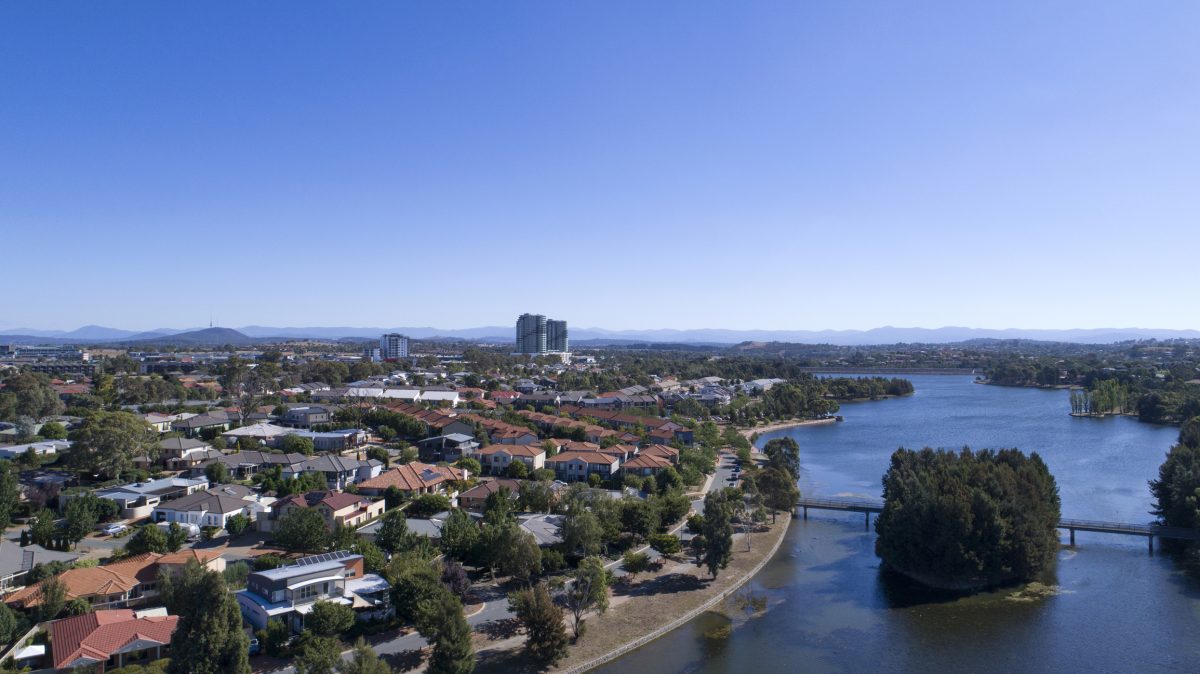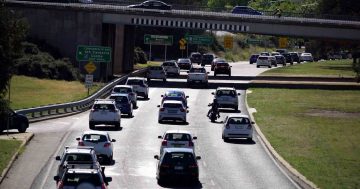
Rents have fallen in areas near Gungahlin, some of the more affordable suburbs in the ACT. Photo: File.
Canberra is now the second most affordable capital city in Australia for renters on an average household income. But many people are still being priced out of the capital’s rental market.
This year’s National Shelter-SGS Economics and Planning Rental Affordability Index (RAI) found that, contrary to almost all other parts of the country, median rents in the ACT fell marginally over the past year, primarily during the first two quarters of 2023.
The proportion of income the average renter spends on their accommodation in the ACT is the lowest in the country, tied with Greater Melbourne at 24 per cent.
This marks an improvement on last year when the ACT recorded its worst score in the index in nearly a decade. The ACT and Greater Hobart were the only two regions where rental affordability improved in 2023. However, the situation has not changed much.
“Like other capital cities, particularly those most impacted by restrictions during the COVID-19 pandemic, the city experienced an improvement in affordability during 2020 and 2021. In 2022, this reverted and the city reached its lowest RAI score since 2013,” the report stated.
“The modest improvement in the most recent year leaves affordability in the ACT at approximately the same point as in 2019.
“The spatial patterns of affordability within the city have changed little over the last year. In 2023, areas near Tuggeranong and Gungahlin returned to acceptable levels of rent. However, in central Canberra, every suburb is now moderately unaffordable.”
Rental affordability has worsened in every other capital city in Australia. It has deteriorated rapidly in Sydney (by 13 per cent), Melbourne and Perth (both by 10 per cent). Only Melbourne and the ACT have what are considered acceptable rents for average-income households.
But for many renters, living in the ACT is still extremely unaffordable.
A single pensioner in Canberra spends on average 67 per cent of income on rent, while a single person on Jobseeker spends on average 112 per cent of income on rent.
For pensioner couples, the ACT is the least affordable region in the country to live. For single part-time workers, it is the second most affordable.
“While the ACT remains on the border of acceptable affordability, low-income households face particularly unaffordable rents (such as the student sharehouse and hospitality worker household profiles), which are pushed up by the overall high-income earning workforce,” the report noted.
“Every suburb in the ACT is unaffordable to severely unaffordable for the student sharehouse. For pensioners, both singles and couples, the entire territory is severely to extremely unaffordable, despite the improvement in rental affordability seen over the last year.”
According to the most recent SQM Research data, Canberra had the highest vacancy rate of all capital cities.
Most capital cities recorded a decrease in vacancies in October 2023, though the ACT’s fell only slightly.
Canberra’s vacancy rate stood at 1.7 per cent in October, down from 1.8 per cent in September but an improvement on 1.1 per cent a year earlier.
The ACT’s vacancy rate far surpasses the national average of 1.0 per cent.
Canberra’s median weekly asking rent was $722 for houses and $568 for units. While asking rent for houses has fallen 3.7 per cent in the past 12 months, asking rent for units is up 1.8 per cent on a year earlier.
The ACT’s combined median weekly asking rent was $638, down 1.1 per cent from 12 months ago. In comparison, the capital city average was $690 per week, up 15.5 per cent over the past year.
Original Article published by Lizzie Waymouth on Riotact.






